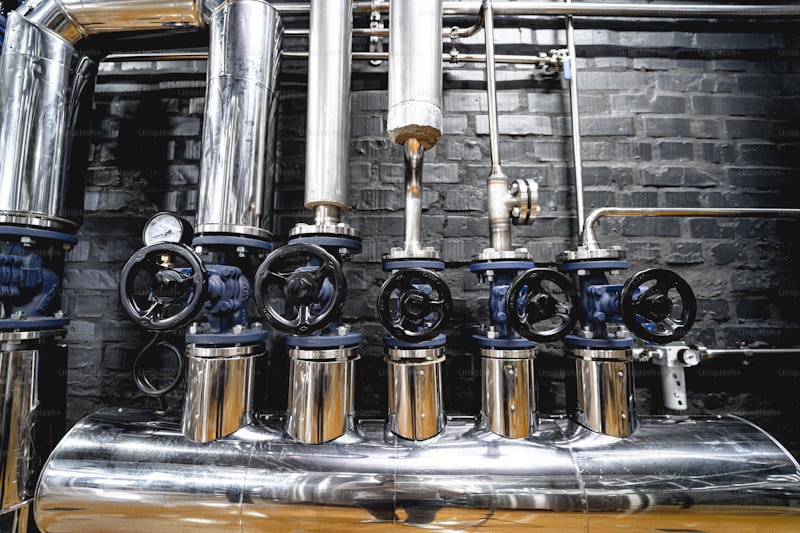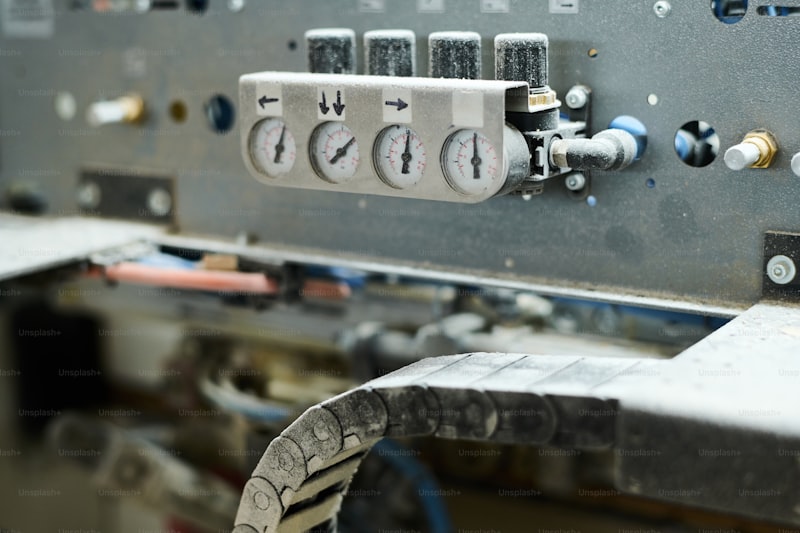Is your car showing signs of fuel delivery issues, such as engine sputtering or difficulty starting? A faulty fuel pump relay could be the culprit. Repairing it yourself can save you time and money, provided you have some basic tools and a willingness to get your hands dirty. Follow this step-by-step guide to diagnose and repair your car’s fuel pump relay.
Before you begin, gather the necessary tools: a screwdriver set, a multimeter, and possibly a flashlight. These will help you access and test the relay.
The fuel pump relay is typically located in the engine bay fuse box or under the dashboard near the steering column. Refer to your car’s manual for the exact location.
Safety first! To avoid any electrical mishaps, disconnect the negative terminal of the battery before proceeding.
Using a screwdriver, carefully remove the relay from its socket. Take note of its position and orientation to reinstall correctly later.
Visually inspect the relay for signs of damage such as burnt contacts or corrosion. A damaged relay may need replacement rather than repair.
Set your multimeter to continuity mode. Test the relay’s terminals according to the manufacturer’s specifications. This will help you determine if the relay is functioning properly.
If the relay is dirty or shows signs of wear, clean the contacts with electrical contact cleaner and a soft brush. For severe damage, consider replacing the relay with a new one.
Carefully place the relay back into its socket, ensuring it is secure and properly oriented as noted earlier.
Once the relay is back in place, reconnect the negative terminal of the battery.
Turn the ignition key to the “ON” position without starting the engine. Listen for the fuel pump operation, which should indicate the relay is working correctly.
By following these steps, you can effectively diagnose and repair your car’s fuel pump relay issues. Remember, if you’re unsure or uncomfortable with any step, it’s always best to consult a professional mechanic. Taking proactive steps to maintain your vehicle’s components can ensure smooth driving experiences ahead.
Mastering Mechanics: Your Essential Step-by-Step Guide to Fixing a Car’s Fuel Pump Relay
Fixing your car’s fuel pump relay is a fundamental skill every car owner should grasp. When your car experiences starting issues or stalling while driving, a faulty fuel pump relay might be the culprit. Understanding how to diagnose and replace it can save you time and money, ensuring your vehicle runs smoothly.
Firstly, locate the fuel pump relay in your car. It’s typically found in the engine compartment, near the fuse box. Refer to your car’s manual to pinpoint its exact location.
Next, before starting any work, ensure the car is turned off and the engine is cool. Safety is paramount in any maintenance task.
To begin, carefully remove the relay from its socket. Use gentle but firm pressure, as some relays might be tightly secured. Inspect the relay for signs of damage such as corrosion or burnt spots. These are common indicators of a malfunctioning relay.
Once identified, procure a replacement relay compatible with your car’s make and model. It’s advisable to purchase genuine parts or high-quality alternatives to ensure longevity.
Now, insert the new relay into the socket firmly but without forcing it. Ensure it’s seated correctly to avoid electrical issues later.
After installation, reconnect any disconnected components and double-check all connections. Attention to detail at this stage prevents potential complications during operation.
Finally, turn on the ignition to test the new relay. Listen for the distinct sound of the fuel pump engaging, indicating proper functionality. If the car starts smoothly and runs without issues, you’ve successfully replaced the fuel pump relay.
DIY Car Care: How to Repair Your Fuel Pump Relay in Easy Steps
Do you find yourself struggling with car issues? Learning to fix common problems can save you time and money. One such problem is a faulty fuel pump relay, which can disrupt your car’s performance. Fortunately, repairing it yourself is easier than you might think.
The fuel pump relay is a crucial component that controls the fuel pump’s operation in your vehicle. When it malfunctions, your car may experience starting issues or even fail to start altogether. Identifying this problem early can prevent more significant problems down the road.
-
Prepare Your Workspace: Start by parking your car on a flat surface and ensuring the engine is cool. Gather the necessary tools: a wrench or socket set, a new fuel pump relay (ensure it matches your car’s specifications), and safety gear like gloves and goggles.
-
Locate the Relay: Consult your car’s manual to find the relay’s location. Typically, it’s found in the engine compartment or under the dashboard. Once located, carefully remove the old relay by gently pulling it out.
-
Replace the Relay: Insert the new relay into the slot where the old one was removed. Ensure it fits snugly and securely. Double-check connections to make sure everything is properly seated.
-
Test the Repair: Before closing everything up, turn the ignition key to the “on” position (without starting the engine). Listen for a clicking sound near the relay, indicating it’s working. If you hear the click, it means the relay is functioning correctly.
-
Secure and Test Drive: Once verified, secure any panels or covers you removed to access the relay. Start your car and take it for a short test drive to ensure everything is operating smoothly.
Repairing your fuel pump relay yourself not only saves money on mechanic bills but also empowers you with basic car maintenance skills. It’s a simple yet effective way to keep your vehicle running smoothly without relying on professional help for every minor issue.
By following these easy steps, you can confidently repair your fuel pump relay and get your car back on the road in no time. Remember, regular maintenance and quick repairs can significantly extend the life of your vehicle, making DIY car care a valuable skill for any car owner.
This article provides a straightforward guide to repairing a fuel pump relay, ensuring it’s both informative and engaging for readers looking to tackle car maintenance themselves.
Troubleshooting Made Simple: Step-by-Step Repair Guide for Your Car’s Fuel Pump Relay
Is your car having trouble starting? It could be a sign of a faulty fuel pump relay. Understanding how to diagnose and fix this issue can save you time and money. Here’s a step-by-step guide to troubleshooting and repairing your car’s fuel pump relay.
Firstly, locate the fuel pump relay. It’s typically found in the fuse box under the hood or under the dashboard. Refer to your car’s manual to pinpoint its exact location.
Once located, visually inspect the relay for any signs of damage or corrosion. A damaged relay may have burnt or melted components, which are clear indicators of malfunction.
Next, test the relay using a multimeter. Set the multimeter to continuity mode and probe the relay’s terminals according to the manual’s instructions. A healthy relay will show continuity across specified terminals, confirming it’s functioning correctly.
If the relay passes the continuity test but your car still exhibits starting issues, check the relay’s power supply. Ensure the relay receives voltage when the ignition is turned on. A lack of power can prevent the relay from switching on the fuel pump.
Additionally, check the relay’s ground connection. A loose or corroded ground can disrupt the relay’s operation, causing intermittent starting problems.
Consider swapping the relay with a known working one as a final test. If the problem persists even after replacing the relay, further diagnostics may be required to inspect the fuel pump itself or other related components.
By following these troubleshooting steps, you can effectively diagnose and repair your car’s fuel pump relay issues. Regular maintenance and prompt repairs ensure your vehicle runs smoothly, avoiding costly breakdowns down the road.
Save Money on Auto Repairs: A Comprehensive DIY Guide to Fixing Your Fuel Pump Relay
Imagine this: you’re cruising down the road, everything seems fine until suddenly, your car starts sputtering. Could it be the fuel pump relay acting up? Before you rush to the mechanic and empty your wallet, why not consider fixing it yourself? It’s not rocket science; with a bit of guidance, you can tackle this DIY project like a pro.
First things first, let’s understand what the fuel pump relay does. Think of it as a switch that controls the flow of electricity to the fuel pump. When it malfunctions, your engine might not get enough fuel, leading to poor performance or even stalling.
-
Diagnose the Issue: Begin by confirming that the fuel pump relay is indeed the culprit. Check your vehicle’s manual for the exact location of the relay and use a multimeter to test its functionality.
-
Gather Your Tools: You’ll need basic tools like a screwdriver set, wrenches, and possibly a socket set. Ensure you have a clean workspace and safety gear.
-
Remove the Old Relay: Once you’ve located the relay (often found in the engine compartment or under the dashboard), carefully disconnect the wiring harness and remove the relay itself. Take note of how it’s positioned.

Install the New Relay: Match the new relay with the old one to ensure compatibility. Insert it into place, reconnect the wiring harness, and secure everything back as it was.
-
Test and Verify: Turn your ignition key to the ‘on’ position without starting the engine. Listen for the fuel pump operation (a soft whirring noise). If all sounds good, start your engine and check for any improvement in performance.
Car Maintenance 101: Step-by-Step Instructions for Repairing Your Fuel Pump Relay

Repairing your fuel pump relay is a critical skill for any car owner looking to maintain their vehicle’s performance. This component plays a pivotal role in ensuring that fuel is delivered efficiently to the engine, making it essential for smooth operation. If you suspect issues with your fuel pump relay, don’t panic – with a few basic tools and a systematic approach, you can often resolve the problem yourself.
Firstly, before diving into repairs, it’s crucial to identify the location of your fuel pump relay. Typically, it’s housed in the engine compartment, near the fuse box. Refer to your car’s manual or look online for specific diagrams that match your vehicle model.
Once located, start by inspecting the relay for any visible signs of damage, such as corrosion or burnt connectors. These are common indicators of relay malfunction. If you spot any, it’s likely the cause of your fuel delivery problems.
Next, using a multimeter, test the relay to determine if it’s functioning correctly. Set the multimeter to measure resistance and check for continuity across the relay terminals. A healthy relay should show low resistance and consistent readings.
If the relay fails these tests, it’s time to replace it. Before installing a new one, ensure it matches your car’s specifications and carefully connect it to the appropriate terminals. Take note of the correct orientation to avoid potential errors during reinstallation.
After replacing the relay, test your vehicle to confirm that the issue has been resolved. Start the engine and monitor for smooth fuel delivery without any hiccups. This step ensures that your repair was successful and that your car is back to optimal performance.
By following these straightforward steps, you can effectively troubleshoot and repair your fuel pump relay without the need for expensive professional services. Remember, regular maintenance and timely repairs are key to extending the lifespan of your vehicle and ensuring reliable performance on the road.
Expert Tips: How to Identify, Access, and Fix Your Car’s Fuel Pump Relay Issues
Identifying a faulty fuel pump relay starts with recognizing symptoms like difficulty starting the engine or engine hesitation during acceleration. These signs often indicate electrical problems within the relay, disrupting the flow of fuel to the engine.
Accessing the fuel pump relay requires locating it within your vehicle’s fuse box or relay panel. Consult your car’s manual to pinpoint its exact location, typically near the engine compartment or under the dashboard. Once located, carefully remove the relay by gently pulling it out.
Fixing the issue may involve several steps depending on the diagnosis. Start by inspecting the relay for any visible signs of damage, such as burned or corroded connectors. If found, clean the connectors using a fine sandpaper or replace the relay altogether with a new one recommended for your vehicle model.
Testing the relay’s functionality is crucial before reinstallation. Use a multimeter to check for continuity or voltage across the relay terminals as per the manufacturer’s specifications. A working relay should exhibit consistent readings, confirming its proper operation.
Understanding these steps empowers you to tackle fuel pump relay issues confidently. By identifying symptoms early, accessing the relay efficiently, and following systematic fixes, you can restore your car’s performance without unnecessary hassle or expense. Always prioritize safety and consult professional advice if uncertain about handling electrical components.
Frequently Asked Questions
Is it dangerous to drive with a bad fuel pump relay?
Learn about the potential risks associated with driving a vehicle with a faulty fuel pump relay. Discover why addressing this issue promptly is crucial for vehicle safety and performance.
What are the symptoms of a failing fuel pump relay?
Learn about the symptoms of a failing fuel pump relay, including engine stalling, difficulty starting the vehicle, and intermittent or complete loss of power to the fuel pump. Recognizing these signs early can help prevent vehicle breakdowns.
How do I know if my car’s fuel pump relay is faulty?
Learn how to identify a faulty fuel pump relay in your car. Discover symptoms like engine stalling or failure to start, and methods to test the relay using a multimeter or swapping with a known good relay.
Can I replace the fuel pump relay myself?
Learn how to replace the fuel pump relay yourself with our concise guide. Discover step-by-step instructions and safety tips for a successful DIY replacement.
What tools do I need to repair a car’s fuel pump relay?
Learn about the essential tools required to repair a car’s fuel pump relay efficiently. Discover the specific equipment needed for diagnosing, testing, and replacing the relay, ensuring you have everything necessary for a successful repair.


